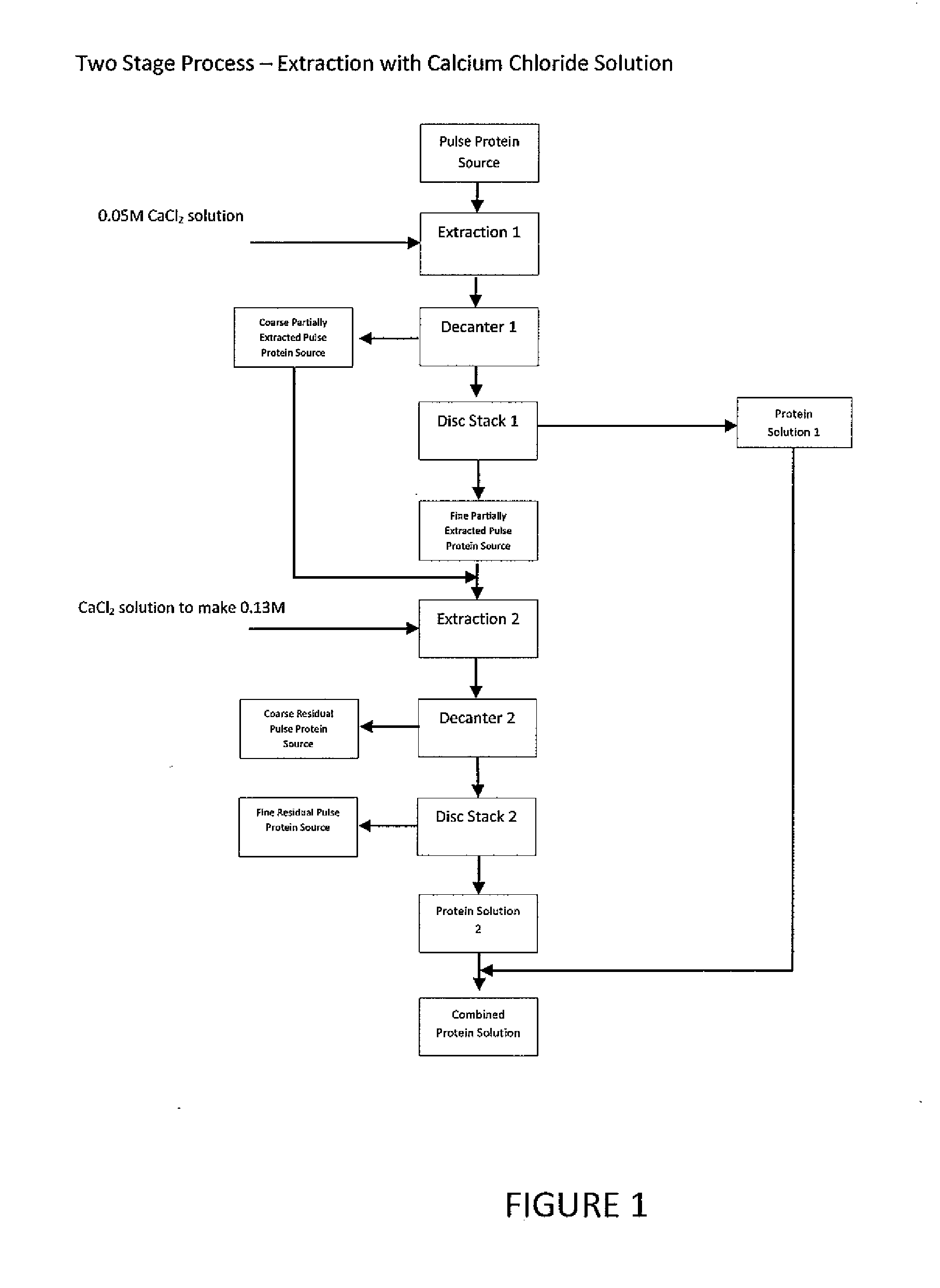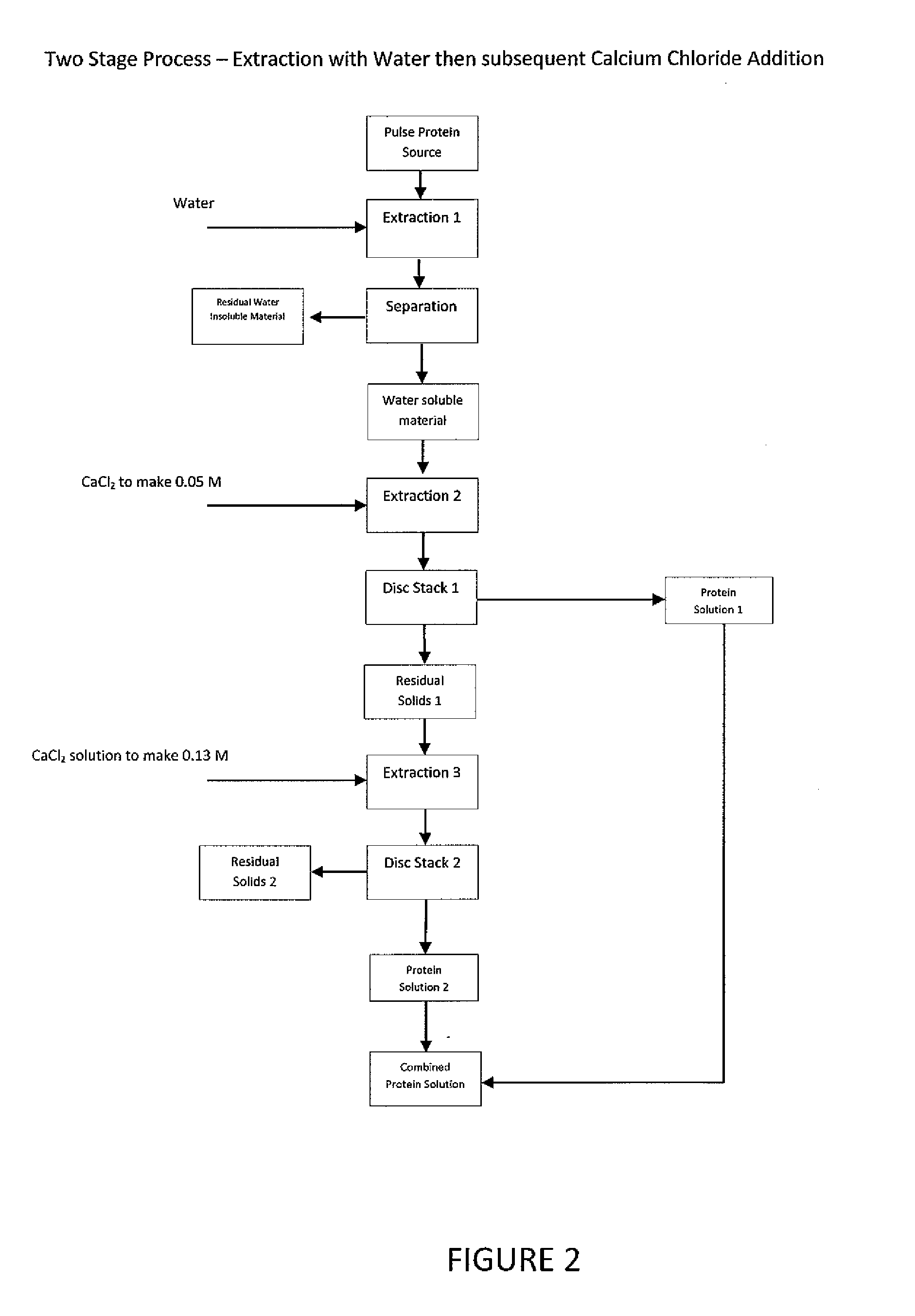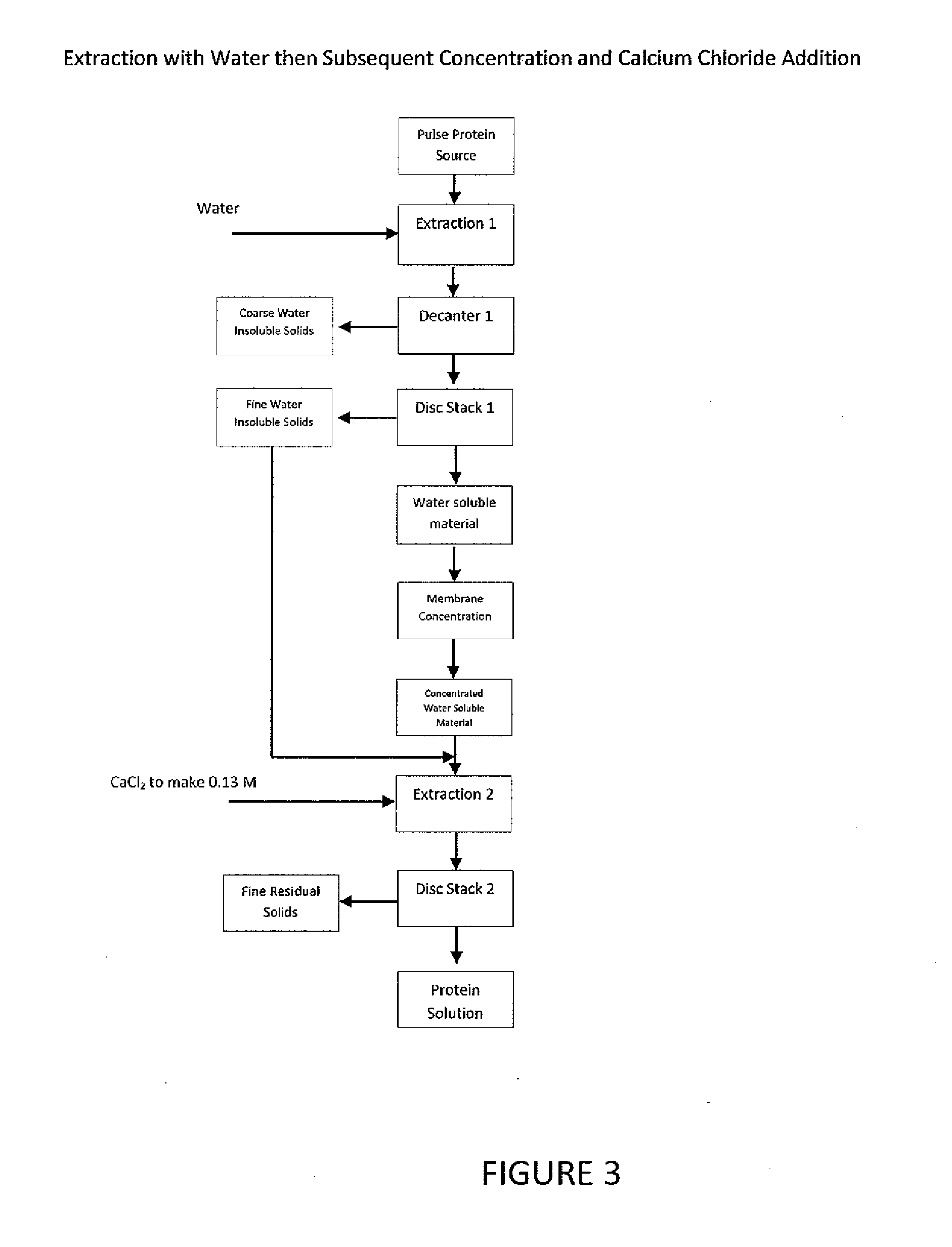Production of soluble protein products from pulses
- Summary
- Abstract
- Description
- Claims
- Application Information
AI Technical Summary
Benefits of technology
Problems solved by technology
Method used
Image
Examples
example 1
[0076]This Example describes one embodiment of the present invention utilizing a two-stage extraction procedure, illustrated in FIG. 2.
[0077]42 kg of yellow split pea flour was combined with 300 L of reverse osmosis purified (RO) water and the mixture stirred for 30 minutes at 29.5° C. Insoluble material was removed and the sample partially clarified by centrifugation, yielding 284.4 L of protein solution having a protein concentration of 2.72 wt %. To this protein solution was added 1.62 kg of calcium chloride pellets (95.5%) and the sample stirred for 30 minutes. Centrifugation was used to separate the insoluble material (designated desludger solids 1) from the protein extract solution (designated centrate 1). 241 L of centrate 1 was obtained having a protein concentration of 1.36 wt %. The pH of this solution was reduced to 2.70 by the addition of 1:1 diluted HCl and the sample set aside. 45.9 kg of desludger solids 1 was obtained having a protein concentration of 8.73 wt %. Thes...
example 2
[0080]This Example illustrates another embodiment of the present invention utilizing a two-stage extraction procedure, illustrated in FIG. 2.
[0081]47.24 kg of yellow split pea flour was combined with 300 L of RO water and the mixture stirred for 30 minutes at 29.9° C. Insoluble material was removed and the sample partially clarified by centrifugation, yielding 280 L of protein solution having a protein concentration of 3.17 wt %. To this protein solution was added 1.626 kg of calcium chloride pellets (95.5%) and the sample stirred for 30 minutes. Centrifugation was used to separate the insoluble material (designated desludger solids 1) from the protein extract solution (designated centrate 1). 226.2 L of centrate 1 was obtained having a protein concentration of 1.60 wt %. The pH of this solution was reduced to 2.84 by the addition of 1:1 diluted HCl and the sample set aside. 53.80 kg of desludger solids 1 was obtained having a protein concentration of 8.84 wt %. These solids were mi...
example 3
[0084]This Example describes one embodiment of the present invention utilizing a two-stage extraction procedure, illustrated in FIG. 1.
[0085]60 g of yellow split pea flour was combined with 600 ml of 0.05M calcium chloride solution and the mixture stirred for 30 minutes at ambient temperature. Centrifugation was used to separate the insoluble material (designated residual 1) from the protein extract solution (designated centrate 1). 545.81 g of centrate 1 was obtained having a protein concentration of 0.97 wt %. 108.66 g of residual 1 was obtained having a protein concentration of 7.97 wt %. An aliquot of 94.34 g of these solids were mixed with 94.34 ml of 0.178M CaCl2 solution (giving an overall calcium chloride concentration of about 0.13M) for 30 minutes. Centrifugation was again used to separate the insoluble material (designated residual 2) from the protein extract solution (designated centrate 2). 96.22 g of centrate 2 was obtained having a protein concentration of 2.09 wt %. ...
PUM
 Login to View More
Login to View More Abstract
Description
Claims
Application Information
 Login to View More
Login to View More - R&D
- Intellectual Property
- Life Sciences
- Materials
- Tech Scout
- Unparalleled Data Quality
- Higher Quality Content
- 60% Fewer Hallucinations
Browse by: Latest US Patents, China's latest patents, Technical Efficacy Thesaurus, Application Domain, Technology Topic, Popular Technical Reports.
© 2025 PatSnap. All rights reserved.Legal|Privacy policy|Modern Slavery Act Transparency Statement|Sitemap|About US| Contact US: help@patsnap.com



